The best genre TV shows on Hulu
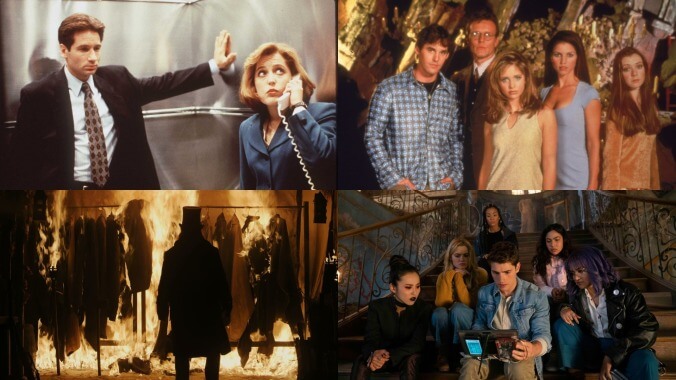
Streaming libraries expand and contract. Algorithms are imperfect. Those damn thumbnail images are always changing. But you know what you can always rely on? The expert opinions and knowledgeable commentary of The A.V. Club. That’s why we’re scouring both the menus of the most popular services and our own archives to bring you these guides to the best viewing options, broken down by streamer, medium, and genre. Want to know why we’re so keen on a particular show? Click the links for some in-depth coverage from The A.V. Club’s past. And be sure to check back often, because we’ll be adding more recommendations as shows come and go.
Hulu subscribers can also check out our lists of the best TV comedies and dramas and the best movies on the service—and if you’re the type who likes to bundle, we’ve got film picks for Disney+, too.
A note to desktop users: If you’d like to view this story in a scrolling layout, you can narrow your browser window.
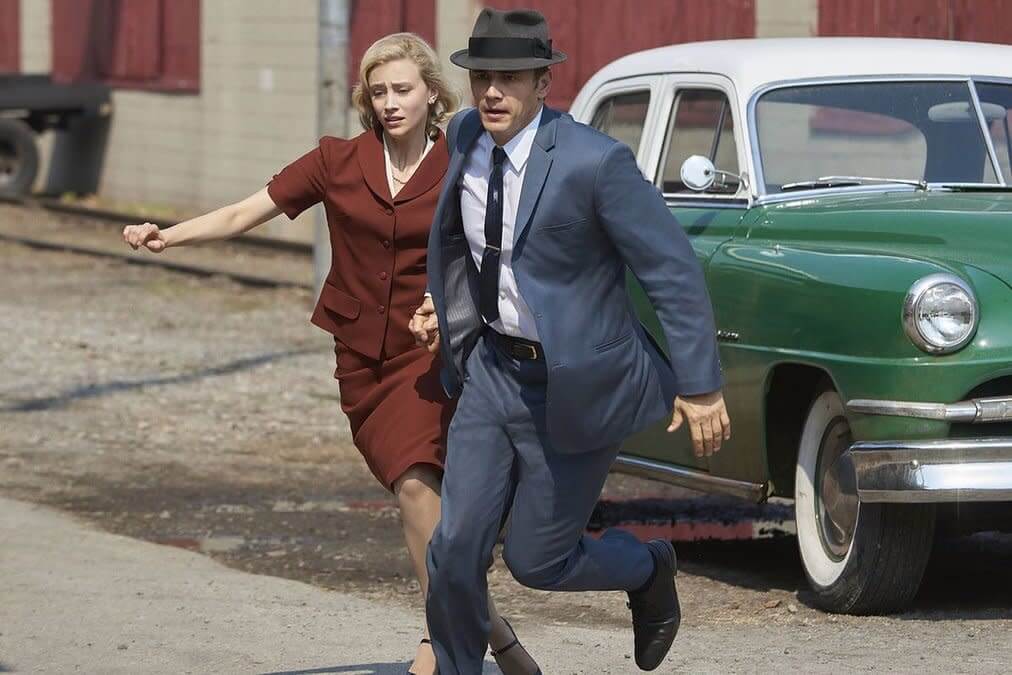
This Hulu miniseries offered an excellent adaptation of Stephen King’s original novel. An unlikely premise—a time-travel wormhole in the back of a diner always leads the time traveler to a certain date in 1960—offers the possibility of stopping the assassination of JFK. There are a lot of rules involved, especially involving the temptation to mess with past fates even further. But a grounded James Franco does some of the best work of his career, as the time traveler determined to stop Lee Harvey Oswald (Daniel Webber). The eight-part series is the perfect format for diving into such a complicated and enveloping plot. []

In Angel, David Boreanaz reprises the character he’d played on Buffy The Vampire Slayer for three seasons: a vampire who’d once been a rampaging force of evil named Angelus, before getting cursed with a soul and a conscience. After moving to L.A., Angel reconnects with an old Sunnydale acquaintance, Cordelia Chase (Charisma Carpenter), an aspiring actress who takes a part-time job with “Angel Investigations,” and eventually develops the ability to help her boss to find the helpless and the hopeless, via the guidance of “The Powers That Be.” Angel’s first season is mostly a supernatural procedural. Only gradually does the show’s world expand, first by introducing powerful nemeses in the form of the lawyers-for-demons at the firm of Wolfram & Hart, then by countering those villains with new allies: the scrappy Charles Gunn (J. August Richards), the scholarly Buffy import Wesley Wyndam-Pryce (Alexis Denisof), the meek southern scientist Winifred “Fred” Burkle (Amy Acker), and the music-loving green-skinned empath Lorne (Andy Hallett). Still later, Angel ends up fighting alongside his teenage son Connor (Vincent Kartheiser), and his old Buffy rival Spike (James Marsters). []
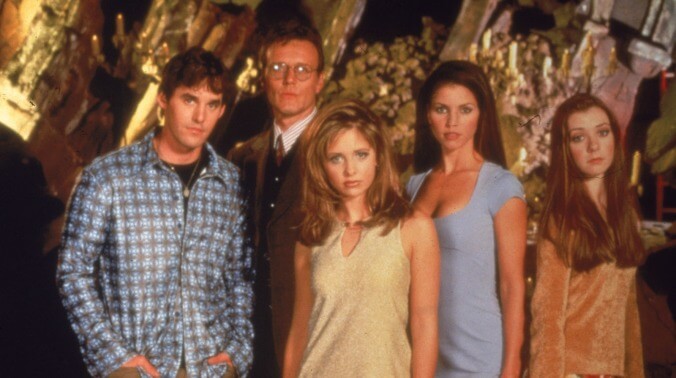
Buffy is perhaps most famous for its adventurousness, on both a plot and stylistic level. The series began as an ultra-low-budget story of a teenage girl who’s a typical high-school student by day and a killer of monsters by night. Played by Sarah Michelle Gellar, Buffy goes on a harrowing hero’s journey over the course of the series, starting out as a cockily confident young woman and coming to realize just how hard it can be to have such great weight placed on her shoulders. Most episodes of the show have a random monster or two pop up in Buffy’s city of Sunnydale, California, having been drawn there by the town’s “Hellmouth,” a magnet for beasts and demons of all sorts. Usually, these monsters stand in as metaphors for typical teenage problems. Then, Buffy and her friends—sweetly dorky nerd Willow (Alyson Hannigan), dependably doofy guy-pal Xander (Nicholas Brendon), and school librarian/exposition deliverer Giles (Anthony Stewart Head)—do their level best to destroy said monster. Meanwhile, in the background, the season’s Big Bad would be plotting, sending out minions, and building toward whatever scheme he or she would unleash in the season finale. []
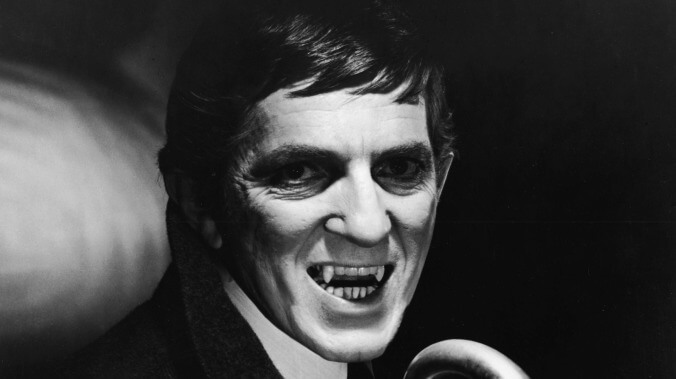
Before Dark Shadows, American daytime television rarely veered from game shows and soap operas laden with ostensibly real-world drama: weddings, affairs, perhaps the occasional case of murder or mistaken identity, but no more. Yet midway through its very first season, Dark Shadows introduced supernatural elements into more familiar tales of blackmail and unrequited love in Collinsport, the ominous Maine fishing town where the show was set.By the end of its groundbreaking, popular run, Dark Shadows had featured ghosts, vampires, witches, werewolves, Satan, raising the dead, reincarnation, brain swapping, time travel, parallel worlds, and a very persistent dream curse. Part of the success of such outrageous storylines can be attributed to the show’s ability to anchor them by alluding to well-known literary works, including everything from Greek mythology to the macabre stories of Edgar Allen Poe, to the entire canon of Gothic novels like Rebecca and Wuthering Heights. Yet even as much as the show looked to the past, it helped shape the future of its medium. []
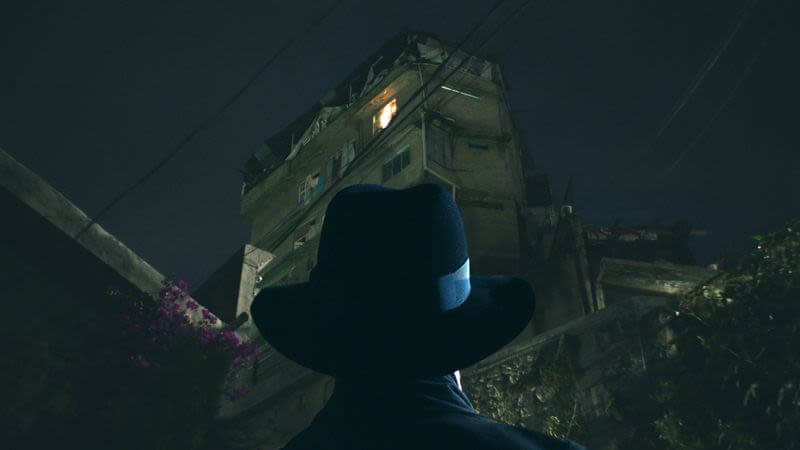
It’s hard out there for a priest. Father Tomas Ortega (Alfonso Herrera) just wants to serve the needs of his flock, but when one of his most faithful parishioners comes to him with talk of demonic possession, his belief is sorely tested. Angela Rance (Geena Davis) is a confident businesswoman struggling to care for her husband’s (Alan Ruck) sudden onset of dementia; when her older daughter (Brianne Howey) starts acting strangely after a car crash that left one of her friends dead, Angela turns to Father Tomas for help. The priest is initially skeptical, but strange visions of an exorcism featuring a desperate, haunted priest (Ben Daniels) force him to question his assumptions—and whatever’s happening at the Rance house is getting worse. Also, this apparently has something to do with franchise. []
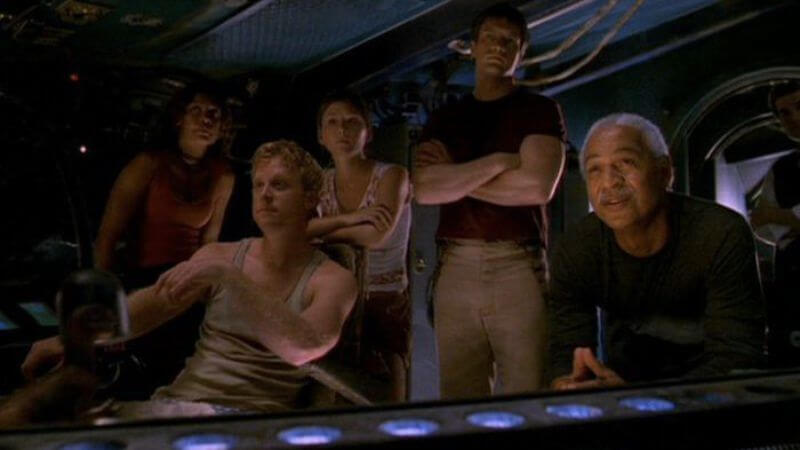
: Like Joss Whedon’s other shows, Firefly sported some serious flaws. And like Whedon’s other shows, it fought to stay on the air long enough to address them. But unlike Whedon’s other shows, Firefly failed, and given how good it was apart from those flaws, it seems churlish now to focus on what could’ve been. Instead, let’s stick with what was: a clever, funny, exciting, original outer-space Western with an unforgettable cast of characters and a palpable sense of fun. Whedon assembled what may be his best-ever group of actors, created a compelling (albeit unfinished) fictional universe, and wore his heart on his sleeve in creating one of the best science-fiction shows in a decade crammed with them. Buffy achieved its own Peter Principle, and Dollhouse bought itself a second chance; mourn Firefly as the great Whedon that wasn’t.
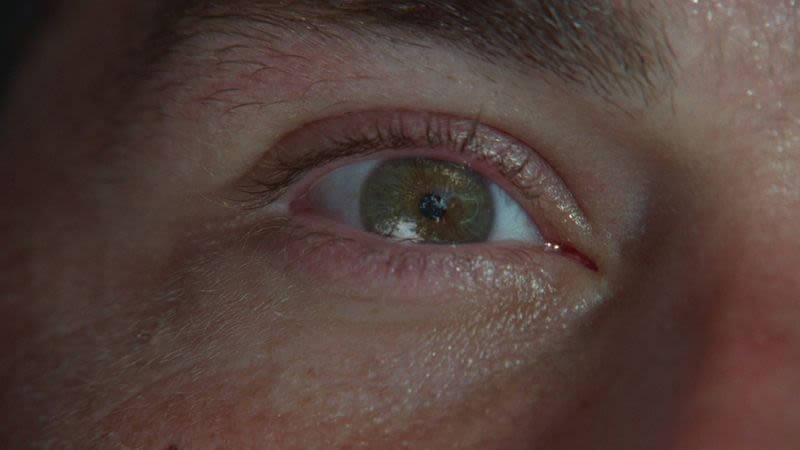
: No series risked more over the past decade than Lost, which has asked its viewers to be patient as the show’s creators have withheld information, killed characters, divided the cast and—in the ultimate potential deal-breaker—toyed with time travel. To some extent, frustration with Lost has become part of the pleasure of watching the show, as fans gather to grumble about dangling plot threads and conflicts that could be easily resolved if characters ever used some of the time they’re spending cast away on a desert island to, y’know, have conversations. But Lost’s payoffs have been well worth its head-slappers. Showrunners Damon Lindelof and Carlton Cuse have presided over a story that’s spanned continents and genres, all while crafting a dense mythology with a human core. Lost is a show about unexpected connections and the search for meaning in our shared cultural arcana. It’s also been a showcase for a sprawling cast of memorable characters, each learning the lesson that if they’re patient enough to wait out the changes, their tragic life stories just might have a happy ending.
The space family Robinson careens across the cosmos in this camp classic from future cinematic “Master of Disaster” Irwin Allen. What began as fairly straightforward weekly adventures on an alien planet eventually reorients itself around more kid-friendly elements like the cowardly jabbering of one-time stowaway Dr. Zachary Smith (Jonathan Harris), Jupiter 2’s catchphrase-spouting robot (a spectacular atomic-age design voiced by Dick Tufeld), and colorful (at least after the black-and-white first season) extraterrestrial adversaries often borrowed from Allen’s other sci-fi series. It’s maybe not one of the greats, but Lost In Space is a great introduction to TV science-fiction for younger viewers—at least better than its . [Erik Adams]
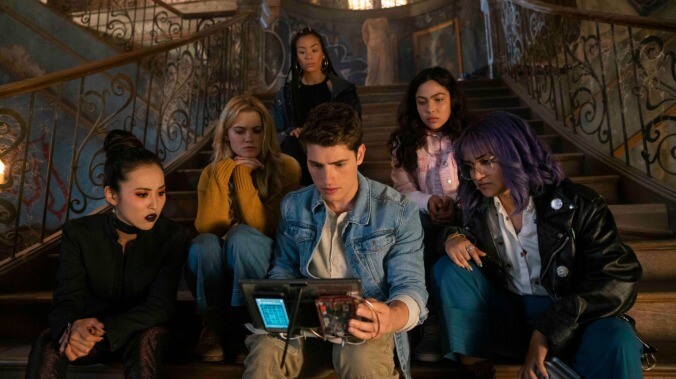
Marvel’s Runaways—the comic-book series about a group of teenagers who discover that their parents are supervillains, and go on the lam to fight them with powers of their own—has a fervent fandom, which is waiting with bated breath for this much-anticipated adaptation. Get ready to exhale: Hulu is following up the momentum of The Handmaid’s Tale and The Path with another superior drama. The new series is, thankfully, not a paint-by-numbers adaptation of the source material. By adding a few new plot twists, as well as excellent casting that should satisfy even the most die-hard comics purists, Runaways will leave this offbeat crew’s many fans gasping for more. Showrunners Josh Schwartz and Stephanie Savage should help Runaways draw in a whole new audience with the quippy, pop culture-laden dialogue they honed on shows like The O.C. and Gossip Girl. []
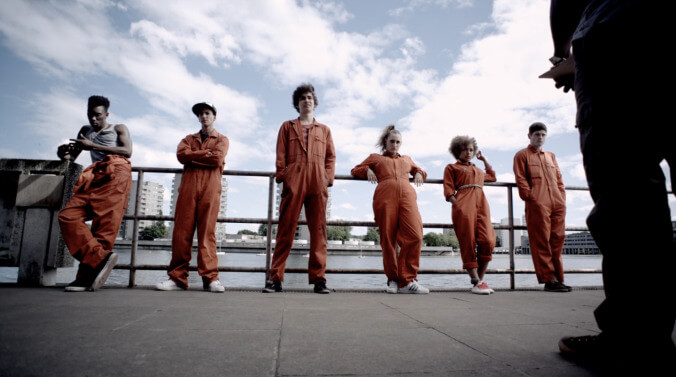
Many shows have attempted to tackle the awkwardness and wonder of humans suddenly acquiring superhuman abilities—but none have had the gloriously brash panache of Misfits. Centering on a ragtag group of juvenile delinquents whose members each find themselves bestowed with a unique superpower by a mystical thunderstorm (it’s happily never explained), Misfits gleefully blurs the line between science fiction, comedy, and drama. The beauty is in its simplicity; it’s much less concerned with telling mythical superhero stories than telling stories about these specific people, and the show soars as a result. That’s because this whole thing is really all about Nathan (Robert Sheehan), Kelly (Lauren Socha), Curtis (Nathan Stewart-Jarrett), Simon (Iwan Rheon), and Alisha (Antonia Thomas). The series lives and dies with them, in all of their alternately vulgar, funny, heroic, and insensitive glory. Whether dealing with a nosy probation worker or a troublesome shape-shifter, they do it together, and in this process Misfits became more than a superhero story. It became a story about how even an ever-so-unlikely group of so-called losers can find family in the most unexpected places. []
Let’s hearken back to the first supernatural era of The CW, one filled with , , and other . It looks a lot like the current CW, filled with , , and . Into that world came Roswell, Jason Katims’ adaptation of the Roswell High book series. What started off as a fairly compelling teen drama, fueled by the chemistry between leads Shiri Appleby and Jason Behr, became a wannabe X-Files, much to its own detriment—after the first season, the show (by network mandate) went the route of formulaic intergalactic adventures while veering wildly in tone. But when it was centered on star-crossed lovers Liz (Appleby) and Max (Behr) and their Roswell High pals and “Royal Four” clones, Roswell offered an enjoyable and often insightful look at the sense of alienation we frequently experience as adolescents. []
Like the hero at its core, knowing Smallville’s production origin story is essential to understanding the show’s life on the air, and how, despite all its faults, it paved the way for TV’s current league of superheroes. Originally conceived as the story of pre-Batman Bruce Wayne before Warner Bros.’ film division vetoed the project to explore a , Smallville reconfigures the future Superman’s life as a genre-bending tale about young people and their weird hormonal bodies in a small town—which made it perfect for The WB. In developing Smallville, superhero agnostics Alfred Gough and Miles Millar pulled from ’s monster-of-the-week structure and high-school-is-hell metaphors, creating an action show about the Kryptonite-infected Smallville High in the years after a meteor shower brought Clark (Tom Welling) to Earth. Yet, 7th Heaven’s conservative, family-first morality was just as important to Gough and Millar’s vision for quintessential Midwesterners Jonathan (John Schneider) and Martha Kent (Annette O’Toole) and the chaste love triangle between Clark, Lana Lang (Kristin Kreuk), and Chloe Sullivan (Allison Mack). []
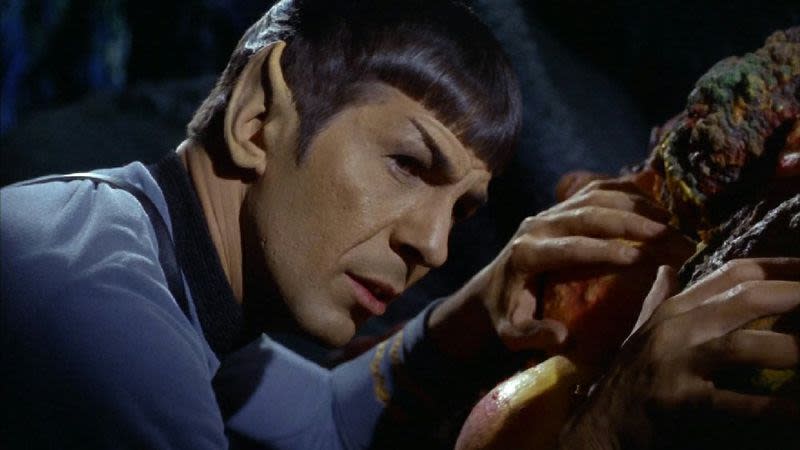
Creator Gene Roddenberry’s “Wagon Train to the stars” is one of the finest examples of pulp storytelling—emotion first, logic eventually—ever brought to the small screen. From 1966 to 1969, Captain James T. Kirk (), first officer Spock (), chief medical officer Leonard “Bones” McCoy (DeForest Kelley), and the rest of the crew of the Starship Enterprise traveled the galaxy, “to seek out new life and new civilizations, to boldly go where no man has gone before.” They struggled against aliens of unimaginable power, stumbled over worlds whose civilizations mirrored Earth’s own troubled past, and, yes, romanced their fair share of space babes. Over the course of three seasons and 79 episodes, Star Trek ranged from suspense to comedy to tragedy, and in the end, the good guys always won, even if victory cost them a little more than they were willing to spend. []
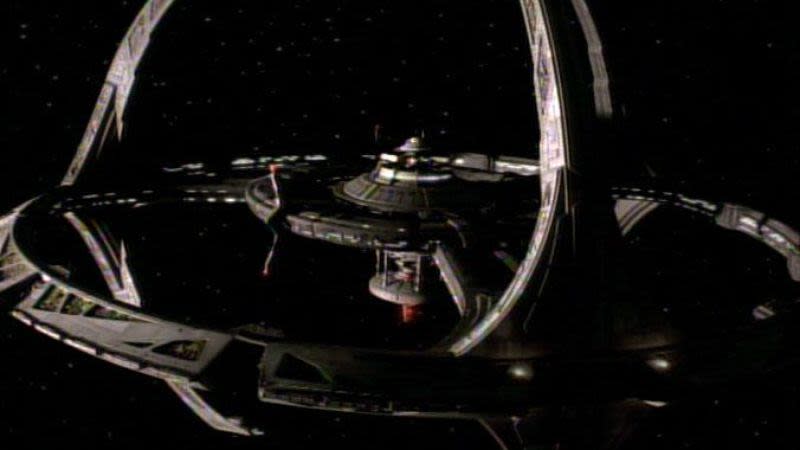
Deep Space Nine is the only Trek series it’s possible to recommend in its entirety without any caveats. The show premiered with remarkable confidence in 1993 and only improved with age. While the previous series followed spaceships exploring the galaxy (and seldom staying to clean up the messes they make), DS9 takes place on a space station at the edges of Federation territory. If TOS was “Wagon Train to the stars,” then DS9 was “Gunsmoke in space,” a show set on the fringes of civilization centered on officers who must occasionally bend the rules to get things done. In the excellent premiere, “,” a wormhole opens a passage to the unexplored Gamma Quadrant and turns DS9 into a crucial trading post. Built up during the first five seasons, a massive war officially kicks off in the season five finale, “,” leading to heavy serialization across the show’s final two seasons. []
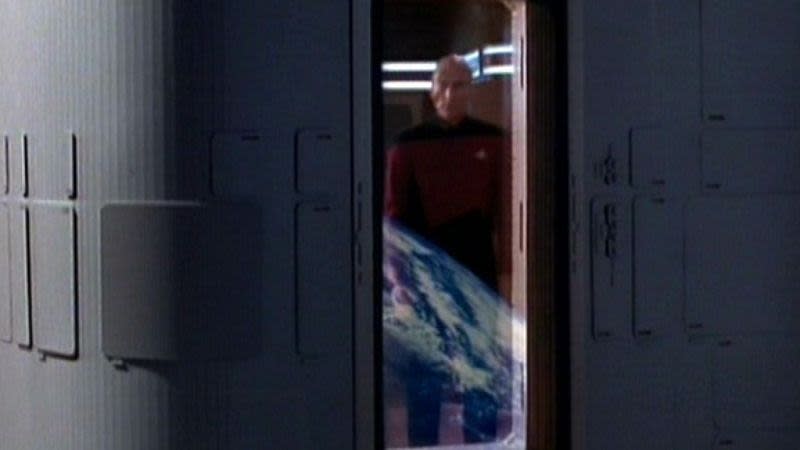
Thanks to Star Trek’s growing popularity, Gene Roddenberry and Paramount Pictures made the unprecedented decision to reboot the series as a brand new TV show. Star Trek: The Next Generation (also known as TNG or The Next Gen) debuted in 1987 and marked the beginning of almost two decades of Trek on TV. Set in the 24th century, 100 years after the original, the show followed a brand new crew aboard the Enterprise. Where TOS focused on space adventures, TNG emphasized negotiations, diplomacy, and headier storytelling. To alleviate the redshirt jokes, commanders on this Enterprise now wore red while security and engineering wore gold (doctors stayed in blue). Replacing the macho Captain Kirk was the more thoughtful, philosophical Captain Jean-Luc Picard (Patrick Stewart). Stewart quickly became TNG’s secret weapon and his Shakespearean gravitas single-handedly elevated the quality of episodes like “” and “.” The often-austere Picard kept his crew at an emotional distance, yet his love of history and literature and his occasionally cheeky sense of humor gave the character a softness. []
Whenever a show trots out a special Halloween episode, the writers pile on the creepshow iconography and Things That Go Bump, but with rare exceptions, TV follows the advice of Joseph Stefano, a writer-producer who put the following in a memo to the staff of The Outer Limits, back when the show was going to be called Please Stand By:There must be terror. The viewer must know the delicious and consciously desired element of terror. Enlightenment, Education, Provocation, and Soul-moving are the end-game of all Drama, but to these must be added, for the purposes of PLEASE STAND BY, the experience of terror. It must, however, be TOLERABLE TERROR. It must remain in the realm of fiction, of unreality. When the play is ended, when the Control Voice has returned to the viewer the use of his television set, the viewer, that willing victim of the terror, must be able to relax and know self-amusement and realize that what he feared during the telling of the story could not materialize and need not be feared should he walk out of his house and stroll a night street.Yet whatever Stefano’s intentions, The Outer Limits—like the similar ’60s anthology series The Twilight Zone—was capable of piercing to the bone. Ask most television buffs to name when they’ve felt the most frightened while watching TV, and chances are they’ll name a moment or image from The Twilight Zone or The Outer Limits, even though the latter was pitched primarily as a science-fiction show. And chances are, those same viewers haven’t been able to “relax and know self-amusement” in the years since they saw it. (At least not in the way Stefano meant the phrase.) It’s a marvel: Almost 50 years ago, a handful of smart show-business types staged these elaborate pieces of make-believe, and decades later, their audience is still haunted. [Noel Murray]
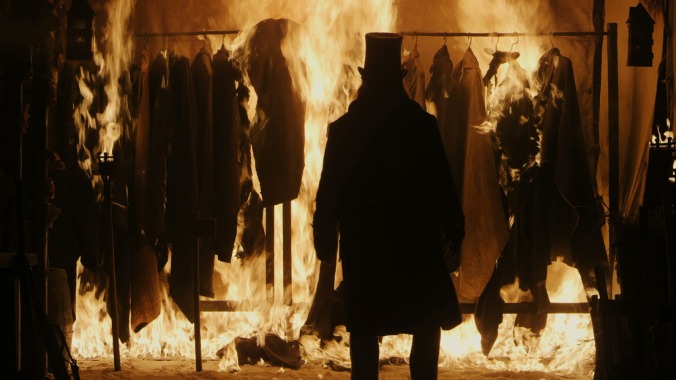
The Terror is masterful on pretty much every front. The show takes Dan Simmons’ novel—a mix of historical fact and horror fiction about a British expedition to find the Northwest Passage that’s stymied by ice and monstrous polar bear-like creature—and crafts something that’s not only scary and visceral, but also incredibly humane and scathingly political. On the surface, few shows this year looked better. The candle-lit nights and the barren arctic landscape are beautiful and oppressive in equal measure, and the visuals are used expertly to build the show’s slow, creeping feeling of dread. The story of the HMS Terror and HMS Erebus begins as a straightforward, though well-crafted, period piece, before the true nature of the show seeps into every episode and every character interaction. Once the ships are trapped, the monster out on the ice isn’t the real threat; it’s the people holed up together. Their bonds break; their trust and companionship begins to rot. In that slow descent into death for everybody—an unrelenting ride into the frozen heart of darkness—The Terror finds insights about the greed of man, and the disastrous effects of colonization and the continuous need for more everything. As always, we’re our own worst enemies. []
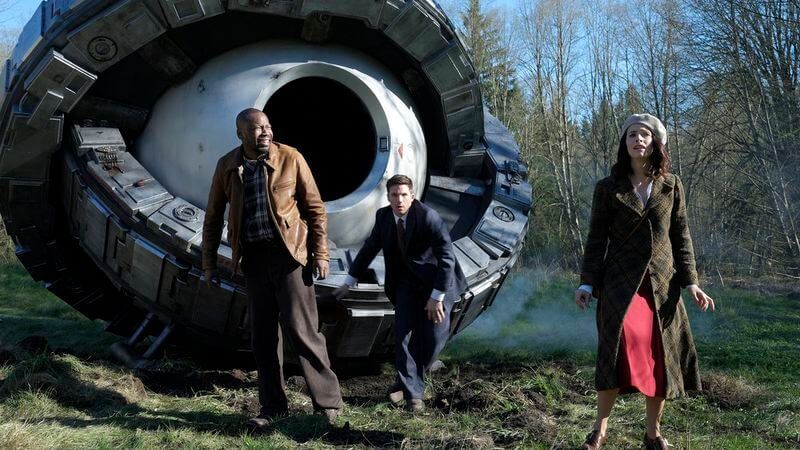
Timeless drafts a historian (Abigail Spencer), a detective (Matt Lanter), and a scientist (Malcolm Barrett) to steer a giant eyeball-looking time machine around, trying to catch an evil mastermind (Goran Visnjic). You almost have to respect the show for throwing so much at the wall, even if only half of it sticks—like staging a new period piece every week, down to the clothes, cars, and wristwatches. (Fortunately this evildoer favors noteworthy destinations like the Hindenburg disaster, the Lincoln assassination, and the Rat Pack days of the 1960s.) The jury’s still out on whether the show can make these jumps in time appear logical, because frankly, going from 1865 Ford’s Theatre to 1965 Vegas in a week seems like a bit of a stretch (a quantum leap, you might say). [Gwen Ihnat]
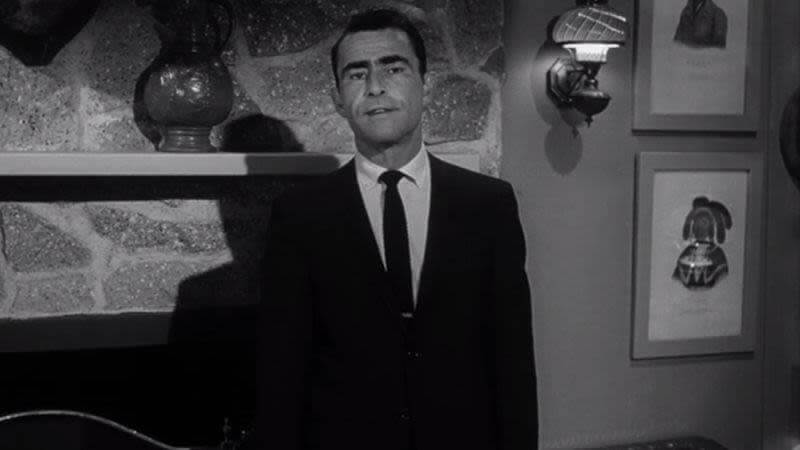
To this day, The Twilight Zone is one of the greatest—most beautiful, intelligent, horrifying—television dramas ever. The stories range from an Old West saloon to a UFO in the future to a Nazi sub to a then-contemporary suburb to a Salvation Army bin—all of them deeply haunted. There’s a sense of national exorcism in Serling’s merciless hammering. But it isn’t just narrative twists and thematic power. A number of uncanny luminaries passed through, like writers Richard Matheson and Ray Bradbury, directors Ida Lupino and Jacques Tourneur, and actors Agnes Moorehead and Burgess Meredith, making the series as much a feat of performance and mood as anything else. Most of all, it’s a time capsule—a freakily subjective one, but one of the greatest American works of its era nonetheless. []
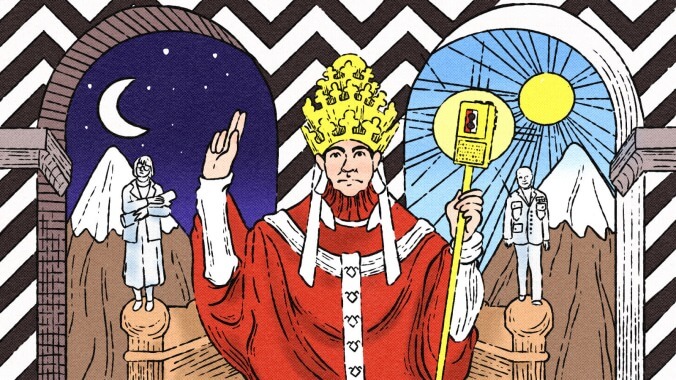
Hill Street Blues writer Mark Frost and auteur came together to create this weird mystery show, but there’s so much more to Twin Peaks than weirdness and mystery. It’s a small-town drama, a soap opera parody, and above all, a nightmare. As Kyle MacLachlan’s Special Agent Dale Cooper explores the town, common threads emerge about domineering men and brutalized women. Like its heir, , Twin Peaks sees patriarchy itself as a horror. With Lynch setting the stage in the pilot, the series is full of unsettling details like off-kilter performances and the screech of buzz saws, the look so terrifyingly stylized that even a meta moment becomes laced with danger. Come for the mystery, stay for the parody, and keep the lights on for the horror. []
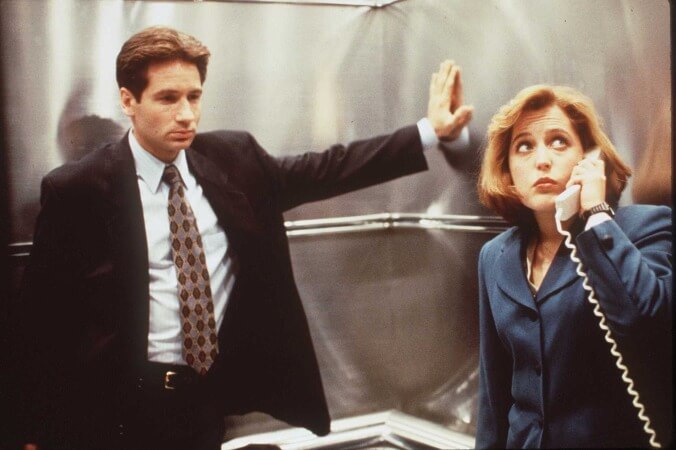
The ultimate binge, The X-Files traces FBI Agents Mulder () and Scully () as they crisscross their way through America, in search of an all-encompassing alien conspiracy and assorted things that go bump in the night. But it’s really about the United States’ uneasy transition from a series of regions to one mass culture. Sort of. This is the perfect missing link between the sorts of funky case-of-the-week shows that defined ’70s drama and the more sprawling, serialized shows that define modern TV drama. It’s also frequently scary, just as often funny, and wildly inventive and experimental, taking its status as a big hit at its height as an excuse to come up with crazy experimental episodes. The serialized storyline may eventually fall apart, but the vast majority of its monster-of-the-week episodes hold up. []
 Keep scrolling for more great stories from A.V. Club.
Keep scrolling for more great stories from A.V. Club.
